Film Inquiry Recommends: Underrated 1980’s Horror Films
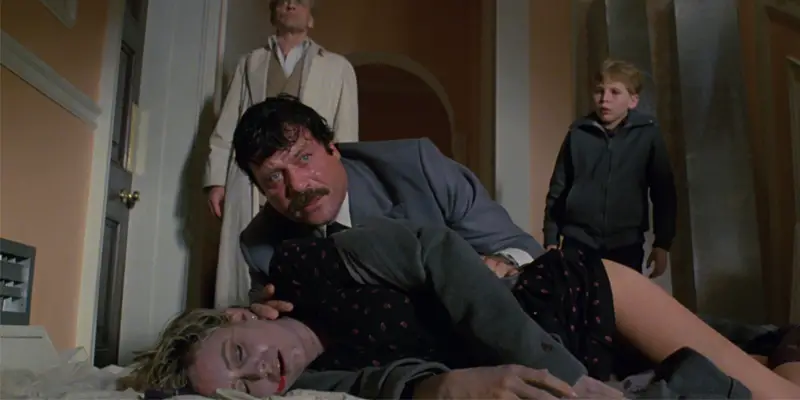
Alex is a 28 year-old West Australian who has a…
Over at our official Facebook page, we are currently posting daily film recommendations, with each week being a different theme. This is a collection of those recommendations! This week’s theme is underrated horror films from the 1980’s.
The 1980’s are usually considered one of the worst decades in cinematic history, due to Jaws and Star Wars creating the concept of the bid budget summer blockbuster and the idea that special effects constituted for great film-making instead of interesting characters or original plots. Nonetheless, the 1980’s was great for genre cinema, with many of the huge genre staples being introduced, such as E.T., Back to the Future, The Terminator and much more.
This was also a booming period for horror films, with the popular mainstream horror style moving away from the atmospheric and subtle approach to a much more excessive and crude artform, a mixture of the influence of the Italian giallo scene and updated practical effects giving upcoming horror directors more tools to their disposal.
The biggest horror films of the 1980’s include The Evil Dead, A Nightmare Before Elm Street, Friday the 13th, Poltergeist and many more, with those four films alone starting franchises that still exist today. Today we are highlighting some of the more underrated films from this period, those that unfortunately fell between the cracks of common acknowledgement.
1. Venom (1981, Piers Haggard)
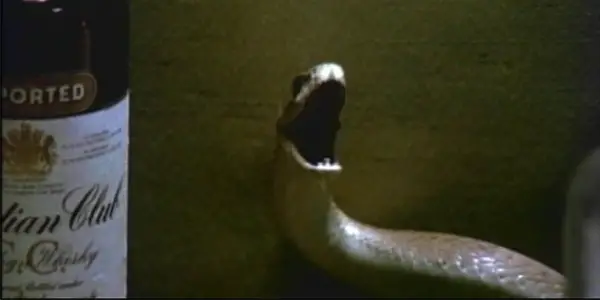
There’s plenty of films out there that have such bizarre and crazy premises that never live up to their outlandish potentials. Mainstream examples of films not living up to their strong premises include Hanc*ck, Transcendence and The Purge, whilst examples within the horror genre include Mama and Goodnight Mommy. That’s why it’s always pleasing when a film decides to do something different, an original take on a tired genre (without going meta or self-referential), which brings us to Piers Haggard’s insane snake-themed horror film Venom. A favourite of both Edgar Wright and Quentin Tarantino (who paid a visual tribute to the film in an infamous scene in Kill Bill Volume 2), Venom is a mix of claustrophobic thriller, animal horror and hostage drama that despite its extremely troubled behind the scenes production, somehow works.
When the rich parents of Philip Hopkins (Lance Holcomb) go on vacation and leave him in the care of his grandfather Howard (Sterling Hayden), criminal Dave (Oliver Reed) decides it’s the opportune time to kidnap the boy and demand a high ransom from the loaded parents. Enlisting the help of the boy’s chauffeur Jacques (Klaus Kinski) and maid Marion (Sarah Miles), the three criminals hold Philip and his grandfather hostage in their home, which quickly escalates into a huge police standoff. Coincidentally the same day, Howard has bought Philip a new pet snake, which was accidentally swapped with an imported deadly black mamba snake at the pet store, which has now been let loose within the hostage-bound home, slowly stalking the occupants.
Whilst the film is quite rough around the edges, it does feature an old school charm, evident in many older exploitation films. You get the sense that despite the production troubles, Haggard’s direction of the claustrophobic and taut tension is done quite well, with the scenes featuring the black mamba snake being genuinely creepy. Whilst the cinematography, soundtrack or acting aren’t anything award-winning, the film delivers its crazy premise well, living up to its incredibly unrealistic scenario.
Klaus Kinski chose this film over Raiders of the Lost Ark due to receiving higher pay and thinking that the script was “shitty”. Kinski was notoriously hard to work with, notably documented in Burden Of Dreams, so mixing him with the alcoholic Oliver Reed and an unstable cast made for a tense and often combative atmosphere during production. The original director, horror veteran Tobe Hooper, was forced off the film by the crew who didn’t like him, thus Piers Haggard jumped on board, who managed to somewhat wrangle the actors into finishing the film. Unfortunately the film didn’t achieve anything significant upon release, thus its lesser known status.
2. Alligator (1980, Lewis Teague)
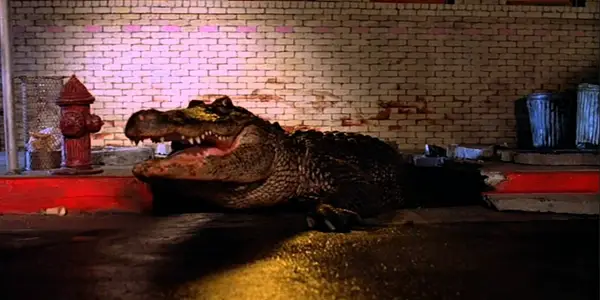
Directed by Lewis Teague and written by John Sayles, both former protege’s of B-Movie king Roger Corman, Alligator is a subversive and incredibly entertaining take on the giant monster movie genre. The film was infamously given 1 star by Roger Ebert, who evidently didn’t understand the film’s underlying comedic nature, one of the film’s strongest aspects.
When a disapprovi ng father notices that his young son has bought a pet alligator, he promptly flushes it down the toilet. The little alligator survives, living in the sewers whilst feeding on terminated laboratory rats. The poor living conditions and unusual diet cause the alligator to grow into a gigantic size, which forces him to leave the sewer and terrorise those on land. As the alligator’s body count starts to rise, it is up to worn-out policeman David Madison (B Movie legend Robert Forster) to track down the giant beast and finally stop him. Madison is helped by his boss Chief Clark (Michael Gazzo, most well known for The Godfather Part 2) and reptile expert Marisa Kendall (Robin Riker), who team up to hunt down the alligator.
What puts this film apart from other standard giant monster movies is its comedically satirical tone, where the characters aren’t just generic heroes who save the day, instead they’re weary middle-aged people dealing with their own problems. The film frequently subverts the standard narrative practices constantly visited by other films of this genre, making the film’s story feel constantly fresh and always engaging. The impressive practical effects have made it age extremely well, even if the film is now sadly quite hard to come by due to rights issues and all physical media copies of it currently being out of print.
This film’s satirical tone is similar to Amy Holden Jones’ Slumber Party Massacre, which both mix established genre tropes with subtle satire, rather than making a comedy about the monster movie genre. Whilst it may look like a simple shift of words, it’s worth understanding that subtle difference in movie-making and how that translates into a successful satire instead of a subpar comedy that’s juggling two differing genres. In the case with this film, it takes the monster seriously, thus so does the audience. Once that hook has been established, then the director can toy with other components of the film, such as character and plot, as the central genre element, the monster, still fuels that key part of the overall narrative, which makes for a coherent film.
3. Inferno (1980, Dario Argento)
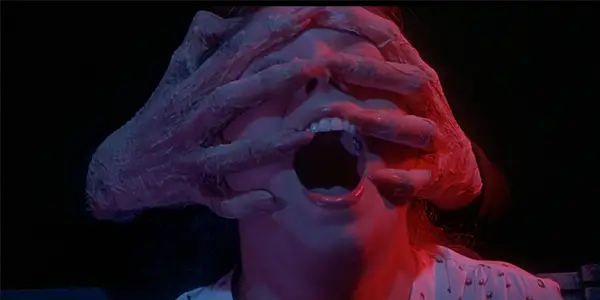
Dario Argento was one of the defining horror voices of the 1980’s and one of the most influential figures of modern horror, alongside contemporaries such as John Carpenter, Wes Craven and Lucio Fulci. Argento is most well known for his giallo films, giallo being the mix of the slasher/detective genres, shot with a distinctive voyeuristic style and overloaded in gore and sexual pervasion. Dario Argento’s masterpiece is Suspiria, his 1977 giallo film which really brought the genre into the mainstream and defined his unique style for years to come. Suspiria would act as the first film in Argento’s “The Three Mothers” trilogy, which are connected by a mythology of 3 different witch covens that each protagonist must face against. The second film in this trilogy is Inferno in 1980, finishing in 2007 with The Mother of Tears, possibly one of the longest breaks between sequels in a horror franchise.
Set 3 years after Suspiria in New York City, poet Rose Elliot (Irene Miracle) buys an antique book titled “The Three Mothers” a latin mythology book which details the descriptions and locations of the Three Mothers witch covens, 3 evil places run by a different witch. When Rose starts to suspect that her apartment building is the second coven, she contacts her brother, Mark (Leigh McCloskey), who is currently in Rome, to come over and help her investigate. Unfortunately, Rose is correct and is killed before Mark arrives. Once Mark gets to NYC and starts to investigate the murder himself, he starts to get sucked into the mystery of the murderous witch group.
Whilst Argento made a string of great horror films throughout the 80’s (Tenebre, Opera, Phenomena), we wanted to highlight Inferno as it is one of Argento’s most visually stunning films, a film with terrific cinematography and stylised visuals, most notably its lucid colour palettes. Whilst the narrative is quite meandering and the acting leaves a lot to the imagination, the film is a very aesthetic and atmospheric experience, which follows a dream-like logic that abandons traditional storylines, rather focusing on thematic tropes and gory death scenes. Inferno is usually quite underrated when mentioning Dario Argento’s varied filmography, so those who haven’t watched it yet, should definitely check it out.
4. Dark Night of the Scarecrow (1981, Frank De Felitta)
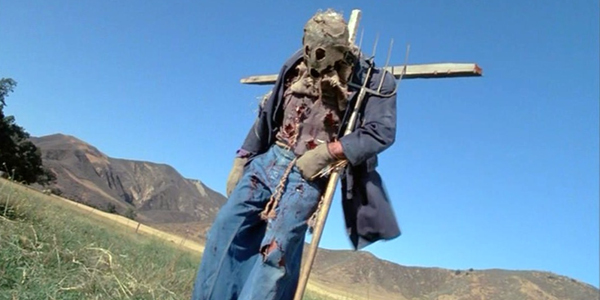
Despite being a television film, Dark Night of the Scarecrow is an atmospheric and well developed horror film, which balances the line between supernatural stalker film and psychological thriller, keeping the distinction between the two ambiguous. Original ly developed as an independent feature before being picked up by CBS, the original television airing of Dark Night of the Scarecrow proved to be quite controversial, with many viewers complaining that the film was too scary for public television. These complaints earned the film a cult status, where the film lives a healthy life on the home media market. The film is also well known for creating the “killer scarecrow” subgenre, despite the film never explicitly showing the scarecrow kill anyone. Films that followed after this include: Scarecrow, Scarecrows and Night of the Scarecrows (real original titles as you can see).
In a small southern town, Charles Eliot “Bubba” Ritter (Larry Drake), a kind-hearted mentally-impaired man who is resented by most of the townfolk due to his relationship with the young MaryLee (Tonya Crowe). On one of their dates, MaryLee is accidentally mauled by a dog and presumed dead and the blame is put upon Bubba because he didn’t stop her from trespassing. In a fit of rage, vigilante postman Otis P. Hazelrigg (Charles Durning) grabs 3 of his friends and hunts Bubba down before the police can arrest him. To get away, Bubba hides in a scarecrow outfit, but Otis sees through the disguise immediately, choosing to shoot and kill Bubba. As soon as he’s killed, it’s revealed that MaryLee is still alive and that Bubba was innocent the entire time. Even with this knowledge, the vigilante group gets off scott-free, due to a corrupt court case and lack of care by the general townsfolk. As the days go on, each of the members is stalked by an ambiguous scarecrow, who always appears before they are killed in a grisly accident, which draws the question of whether the deaths are caused by the supernatural spirit of Bubba, a vengeful MaryLee or a psychological effect of their guilt over killing an innocent person.
The hinderance of the television movie is a plus and minus for this film, as the film had to be heavily censored to be allowed to air on public television, so any gore/blood could not be shown. What this does tho is make the death scenes much more creative, as the film has to simply imply the gory deaths that are inflicted upon the main characters. This harks back to the old horror style where the violence the filmmaker doesn’t show you will always be much worse than anything they can film, as it’s all purely to your vivid imagination, a lesson learnt from classic horror films such as The Texas Chainsaw Massacre and Halloween. Dark Night of the Scarecrow is a cool, somewhat underrated horror film that defies the bad reputation of the standard “TV movie”, especially for the 1980’s.
5. Sole Survivor (1983, Thom Eberhardt)
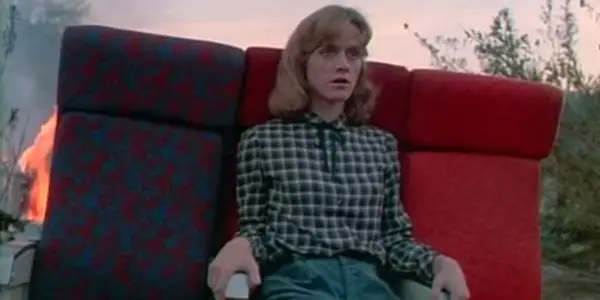
The spiritual precursor to the Final Destination series and It Follows, Sole Survivor is a criminally underseen horror film that served as the debut feature film of genre director Thom Eberhardt. The best description of Sole Survivor is a science-fiction themed remake of Herk Harvey’s horror classic Carnival of Souls, a film exploring the idea of a protagonist chased by an unavoidable ambiguous threat. Made on a super small budget of $350k, the film was given a very limited theatrical release and a minor home media release, thus most people never saw or heard of it. Even its new DVD release is quite hard to obtain, keeping the film in its continuously underrated status.
Television station worker Denise Watson (Anita Skinner) is the only survivor of a horrible unexplainable plane crash, with the other crazy factor being that Denise survived completely unharmed and without injury. Living in a state of shock and confusion, her mental health starts to deteriorate as she sees random people following her and an assortment of different voices constantly parading through her mind. When she consults a psychic friend of hers, Denise soon realises that she was meant to die on that flight and that Death himself is sending recently deceased people to get her and finally end her life.
As you can see from the plot outline, the similarities to It Follows and the Final Destination series are quite close, but the creators of both films deny the film being an inspiration. The film fulfils its unique premise well, setting up a creepy atmosphere that gets increasingly tense as the film climbs towards its satisfying climax. Whilst this film is considerably slower than most horror films and its lack of traditional kills/shocks may put off mainstream horror fans, Sole Survivor is an eccentric horror film that fortunately still holds up today.
6. Cassandra (1987, Colin Eggleston)
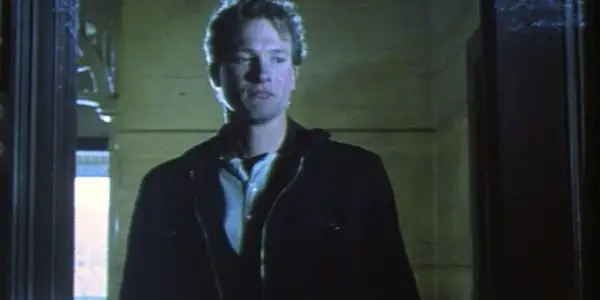
Made during the later stages of the infamous Australian Exploitation period, Colin Eggleston’s Cassandra is one of Australia’s more underrated horror films, a mix of giallo craziness and old school B-Movie sensibilities. Whilst Colin Eggleston is most well known for directin g the claustrophobic thriller Long Weekend and the sequel to the sexploitation picture Fantasm, Cassandra is probably one of his best films that was unfortunately one of the last ones he ever made. Like most of the exploitation films during the late 70’s/80’s such as Next of Kin and The Chain Reaction, Cassandra is a film that barely got a release outside of Australia, making its international awareness quite low, despite its cult status within Australia.
Throughout her entire life, Cassandra (Tessa Humphries) has suffered from recurring horrific nightmares of various deaths and suicides of people she doesn’t know. As she grows older, she decides to finally investigate her visions to find any meaning behind them, slowly learning that they are actually psychic visions and that all the deaths she is witnessing are actually happening. Due to her thorough knowledge of so many murders and her altered sanity, the police start to suspect that she may be a serial killer and her nightmares are a work of fiction, which she must fight against whilst investigating the innocence of her brother Stephen (Shane Briant) who she suspects may have committed a terrible murder.
Whilst the film was made for a theatrical run, it was unfortunately dumped onto home video upon its initial release, which back in the 80’s was the mark of a bad film. Despite this status, the film is a well constructed eerie thriller which has a unique premise that the film capitalizes on. Cassandra is one of the many discoveries that can be found by investigating Australia’s loaded genre history, a period of time that pumped out a variety of interesting and creative genre tales that mixed Australian values and American grindhouse aesthetics in terrific fashions.
7. The Being (1983, Jackie Kong)
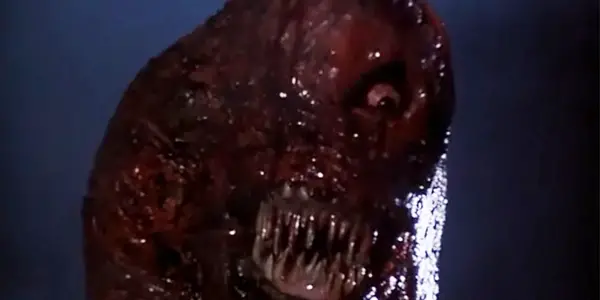
Jackie Kong may not be a director that most mainstream filmgoers recognise, but she is a great genre director who unfortunately has only directed 4 films so far: The Being (her impressive debut feature), Night Patrol, Blood Diner and The Under Achiever s (an Animal House knockoff). Blood Diner is her most well known film due to its bizarre premise and terrific practical effects work. Despite The Being being shot in 1980, the film was shelved for 3 years before receiving a limited release that garnered negative reviews from critics at the time. The film got a new evaluation upon its DVD release, where modern horror critics noted the film’s successful marriage of police, horror and science fiction genres and its positive attitude towards old school shlock values.
In a small secluded American town, an unknown creature is caught lurking around the disposal dump. Whilst the police debate it being an animal or an extraterrestrial being, it is discovered to be a local kid who has been transformed into a slimy mutated monster due to some dumped toxic waste. Driven insane by the copious amount of toxic waste that he’s ingested, he roams the town killing anyone and anything in his path, decapitating and destroying those who unfortunately cross him. It is up to Chemical safety engineer Garcon Jones (genre legend Martin Landau) and local Detective Mortimer Lutz (Bill Osco) to track down the creature before he causes anymore harm.
What are some other horror films from the 1980’s that you can recommend?
Does content like this matter to you?
Become a Member and support film journalism. Unlock access to all of Film Inquiry`s great articles. Join a community of like-minded readers who are passionate about cinema - get access to our private members Network, give back to independent filmmakers, and more.












